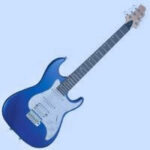For guitar players, especially beginners or those diving into longer practice sessions, finger soreness is a common hurdle. The fingertips, unaccustomed to the pressure of guitar strings, can become tender and even painful, hindering practice and enjoyment. If you’re experiencing this, you might be searching for solutions like Finger Covers For Guitar to keep playing comfortably. Let’s explore some options based on real-world experiences and considerations for finding the best fit for you.
The Challenge of Sore Guitar Fingers
Developing calluses is a natural process for guitarists, providing a protective layer on the fingertips. However, this takes time, and sometimes, even with calluses, certain fingers can remain more sensitive than others. As one player described, “I have one finger that never gets enough callous on it and always gets sore. A permanent groove is etched where the strings contact and it never toughens up.” This can severely limit playing time and enjoyment, forcing players to take breaks when they’d rather be practicing or performing.
Exploring DIY and Commercial Finger Protection
Many guitarists, facing this issue, have experimented with various methods to protect their fingers. Some initial thoughts and DIY approaches include:
-
Athletic Tape: A readily available option, athletic tape can offer a temporary layer of protection. However, as noted, “athletic tape, doubled – it wears through and gets sticky after a few slides.” This makes it less than ideal for longer sessions or styles that involve frequent sliding.
-
Breathable Strips: Thinking outside the box, some have tried “Breatheright strips rapped around the tip of the finger.” While offering more rigidity than tape, these can be “too hard of plastic,” potentially hindering finger flexibility and feel.
-
Finger Gloves: Commercially available finger gloves designed for guitar are an obvious option. However, feedback suggests they can be “too flimsy,” not providing enough substantial protection against string pressure.
These DIY attempts highlight the need for a balance: protection from string pressure without sacrificing dexterity and the tactile feedback essential for playing.
Considering Commercial Finger Covers: Pads and Protectors
Beyond DIY, several commercial products are designed specifically as finger covers for guitar. These range from simple finger pads to more structured protectors. Products mentioned include:
-
Tory Red Cap – Finger Pads: Praised for their effectiveness, these pads seem like a solid option. However, a drawback for some playing styles is “even though I can slide with these, it is really too much resistance.” This is a crucial point for players who incorporate slides into their technique.
-
Swingline Finger Protectors: While originally designed for office use, Swingline finger protectors are mentioned as a “second choice after Tory.” This suggests they might offer a readily available and affordable alternative, though perhaps not specifically optimized for guitar playing.
-
GalaxyGuitar Product ZT-1: This product represents a more significant investment. The high price point, “$78 each,” and the no-return policy raise concerns. Without the ability to try and return, investing in such a product becomes a gamble, especially with the user’s valid point: “What if it doesn’t work as advertised, you are stuck with $78 out the window.”
The Quest for the Ideal Solution: Grip, Slide, and Feel
The ideal finger cover for guitar needs to address several key factors:
- Protection: Effectively reduce or eliminate finger soreness and pain from string pressure.
- Grip: Maintain sufficient grip on the strings for clear notes and control.
- Slide: Allow for smooth sliding, crucial for certain playing styles.
- Feel: Preserve enough tactile feedback to maintain accuracy and musicality.
- Durability & Comfort: Be durable enough for regular use and comfortable for extended playing sessions.
One innovative DIY modification mentioned involves gluing “a piece of soft leather on the tip” of a finger cover. This attempt to improve slide and grip by using leather, “with the rough side out,” demonstrates the ongoing search for the perfect balance. The user notes, “I glued a piece of soft leather on the tip, with the rough side out (the smooth side slips too much), trimmed it down small enough so it would not touch the adjacent strings and it works great.” This highlights the potential of customizing solutions to individual needs and playing styles.
Finding Your Finger Cover Solution
Ultimately, the best finger covers for guitar are subjective and depend on individual needs and playing preferences. Experimentation is key. Consider these steps in your search:
- Identify your primary need: Is it pure pain relief, or do you need to maintain slide capability?
- Try DIY options: Experiment with tape or readily available finger protectors to understand your basic needs.
- Explore commercial finger pads: Products like Tory Red Cap offer a starting point for specialized guitar finger protection.
- Consider material and texture: Think about materials like leather, silicone, or rubber and how they affect grip and slide.
- Don’t be afraid to modify: As shown with the leather modification, customizing existing solutions can lead to breakthroughs.
Finding the right finger covers for guitar can be a game-changer, allowing you to play longer, more comfortably, and continue enjoying your musical journey without the limitations of sore fingers.

